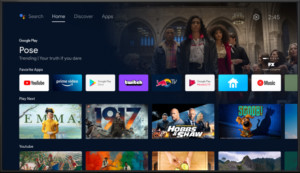What is Linear Television? A Comprehensive Guide
Linear television, also known as traditional or broadcast TV, is a system where television content is transmitted sequentially according to a predetermined schedule. Viewers tune in to a specific channel at a specific time to watch a program. This contrasts with on-demand services like Netflix or Hulu, where viewers choose what to watch and when. But What Is Linear Television in today’s media landscape, and does it still hold relevance? Let’s delve in.
Understanding Linear TV Programming
Linear TV relies on scheduled programming, determined by the broadcaster or cable provider. This schedule dictates what shows, movies, or news broadcasts air at any given time. Viewers have limited control, needing to tune in at the designated time or record the program for later viewing using a DVR. Think of it like a flowing river – the content follows a set path.
Who Watches Linear TV in the Digital Age?
While streaming services have gained immense popularity, linear TV still boasts a substantial viewership. A significant portion of the US population, particularly those over 35, regularly tune into linear TV. Surprisingly, older demographics often represent the most affluent consumer groups, making them a valuable target audience for advertisers. Moreover, live events like the Super Bowl or the Oscars continue to draw massive audiences unmatched by any other platform.
The Advantages of Linear Television Advertising
Linear TV advertising offers several key advantages:
- Broad Reach: Linear TV provides access to a large and diverse audience, enabling widespread brand exposure.
- Non-Skippable Ads: Traditional commercial breaks force viewers to engage with advertisements, increasing brand recall.
- Trust and Credibility: The regulated nature of linear TV lends an air of authority to advertised brands.
- Diversification: Linear TV allows brands to diversify their marketing strategies beyond digital platforms reliant on cookies.
The Drawbacks of Linear TV
Despite its benefits, linear TV faces challenges:
- Fragmenting Audience: The rise of streaming platforms has fragmented viewership, making it harder to reach a specific target demographic.
- Limited Targeting: Compared to digital advertising, linear TV offers less granular targeting options.
Linear TV vs. Other TV Advertising Formats
It’s crucial to distinguish linear TV from other forms of television advertising:
- Connected TV (CTV): CTV delivers content through internet-connected devices, offering advanced targeting and personalization capabilities. Linear TV excels in broad reach, while CTV allows for niche audience targeting.
- Addressable TV: Addressable TV uses household-level data to target specific homes with tailored advertisements. However, CTV still offers superior targeting precision.
The Enduring Relevance of Linear Television
While the future of television may lean towards streaming, linear TV remains a powerful force in advertising. Its ability to reach large audiences, coupled with the impact of non-skippable ads, makes it a valuable tool for building brand awareness and driving sales. The significant advertising revenue generated by linear TV further underscores its continued importance.
Advertising on Linear TV: A Strategic Approach
Navigating the linear TV advertising landscape requires expertise. Partnering with a specialized agency can help brands develop effective strategies, optimize ad placements, and measure campaign performance. Understanding the nuances of linear TV remains essential for maximizing advertising ROI.
Exploring Linear TV Advertising Opportunities
Linear TV provides a unique platform for brands seeking to reach a broad audience and establish a strong presence. While streaming services offer advanced targeting, linear TV’s enduring reach and impactful advertising format continue to make it a valuable component of a comprehensive marketing strategy.








